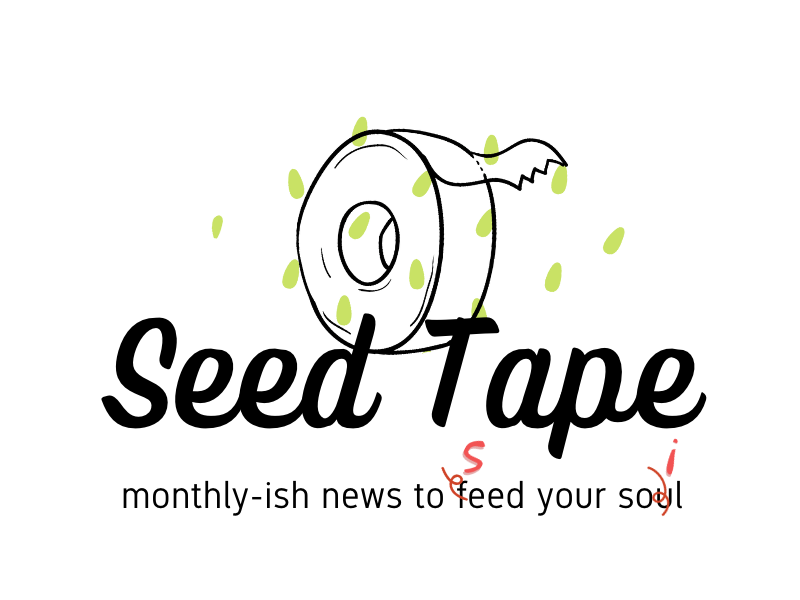Horace Pippin, the Fish Pepper, and Me
Black History Month’s theme for 2024 is “African Americans and the Arts,” exploring the key influence African Americans have had in the fields of "visual and performing arts, literature, fashion, folklore, language, film, music, architecture, culinary and other forms of cultural expression."






Horace Pippin (February 22, 1888 – July 6, 1946) was a self-taught American artist who painted a range of themes, including scenes inspired by his service in World War I, landscapes, portraits, and biblical subjects. He was the first Black artist to be the subject of a monograph, Selden Rodman's Horace Pippin, A Negro Painter in America (1947), and the New York Times eulogized him as the "most important Negro painter" in American history.
Horace Pippin’s connection to horticulture and cultural preservation of African American foodways and seeds is described Preservation Maryland’s blogpost, Maryland Food History: The Fish Pepper and in other writings.
Pippin shared the fish pepper variety (and many others) with H. Ralph Weaver in the early 1940s in exchange for bee-sting therapy. Its white unripe fruit were used to flavor seafood dishes in the Black catering community of Baltimore in the late 1800s and early 1900s. Weaver's grandson (William Woys Weaver) found the seeds in a baby food jar in his grandmother's deep freezer a couple decades later, many years after his grandfather's death, and was able to reintroduce them via Seed Savers Exchange.
I learned of Horace Pippin in college, but I only discovered the fish pepper two years ago, listening to the 6th episode of the podcast Seeds and Their People. Host Owen Taylor and his guests told of the rediscovery of this historical pepper hailing from Baltimore, Maryland, my birth place and the legacy of my maternal ancestors: all of us were born in Baltimore dating back to my great-great grandmother Elizabeth Brown Johnson born in 1845.
In the way that Amirah Mitchell, the owner and seed farmer behind Sistah Seeds, has brought seeds of the African diaspora home to her farm, through her own personal exploration of her ancestry, I wanted to grow the fish pepper at my home, now in Napa, California. Inspired by Amirah and her seed stories, I bought my first few packets of the fish pepper from Sistah Seeds and began to grow them in 2023. I shared some of Amirah’s seeds with my mother who grew them at her home garden that same year.
Peppers grow slowly but when they get started they grow steadily and beautifully as leaves unfurl to full flower and finally give ripe, plentiful fruits. The variegated leaves of the plants (6 in all in my front and back yards) are so dazzling, I hardly wanted the process of watching them grow to end. Equally fascinating was how the peppers change color from white, to white and green, then shades of orange blend through, until they finally turn a bright crimson red.
Now I’m not so much of a hot pepper gal, but I love me some spice! The taste of the fish pepper is floral and smoky. It’s got a kick that playfully delights your tongue, but then leaves space for other flavors to blend and shine through. It’s a pepper that plays well with other foods and flavors. No wonder it has a variety of uses in sauces, soups, featured with fish (hence the name), as the Baltimore chefs knew well how to do.
But the real deal in my journey, the heartfelt emotional delight, was to imagine and remember Baltimore, my grandmother, and my whole matrilineal line born there while the fish peppers grew. Even though I left my birthplace with my parents at the age of 2, my mother and grandmother nurtured me until that time right in my grandmother’s brick house on Monroe Street. These peppers took me back to my birthplace, a place where my ancestors were born, and as they dwelled there, loved and lost, thrived and suffered, and some of them, passed in the same place. Much like the heady scent of marigolds connects ancestors passed with generations living during the celebration of Xantolo, the flavor of the fish pepper invites my spirit to remember my origins and mingle with the ancestors who still remember me, even though I haven’t thought about them for a long time.





~~~
Those hoping to taste this piece of Maryland history authentically can enjoy it in meals at the popular Baltimore restaurant Woodberry Kitchen or buy fish peppers straight from Baywater Farms in Salisbury.
But of course, you can grow your own fish peppers, like I did. When you grow yours, try William Woys Weaver’s recipe for fish pepper salsa. And remember to save and share those seeds to commemorate Black culture, Baltimore’s foodways, and culinary history.
Of course, I saved seeds from my first harvest. So fish pepper seeds will be available in seed library annexes in March 2024. If you are not near Napa, California, I recommend getting fish pepper seeds from Sistah Seeds or Truelove Seeds. Supporting Amirah and Owen in their work is truly heartfelt and will take you on a journey you never knew you wanted to begin.
~~~~
Sources / Further Reading:
https://www.wikiart.org/en/horace-pippin
https://seedsandtheirpeople.podbean.com/e/ep-6-fish-pepper/
https://www.preservationmaryland.org/maryland-food-history-the-fish-pepper/





